Looking for the best watercolor brushes? Let me just state the obvious: This is an overwhelming task.
There are so many opinions, brands and styles of brushes that it can be difficult to actually know if you’re choosing the right brush. If you’ve been following my blog or YouTube channel for a while, then you’ll know I’m a HUGE fan of Princeton brushes. Specifically the Heritage 4050 series for my watercolor paintings. While these brushes are my top picks, I thought I’d round up an ultimate guide to watercolor brushes, my top picks and what they’re used for, so you can go out on your own and choose what’s best for you and your style! Also, some of these brands might be easier to find in your area, so let’s get to it!
Disclosure: This email contains affiliate links which means for some product purchases, I may earn a small commission—at no extra cost to you. I only share my faves and it helps support the free content I share! Thank you!
Glossary of Terms
Snap
This is measured by how well a brush “snaps” back to its original shape or parallel after it’s bent. I use synthetic hair brushes for this reason because often, natural hair brushes are too soft to have a good snap!
Spring
How well a brush holds its shape when you’re applying different watercolor techniques or dragging it across your paper. If the hair of the brush remains bent for longer, it has a good spring!
Capacity/Load
How much water a brush can hold. This will vary depending on the size and shape of the brush, but certain series and brands of brushes will have a better capacity than others.
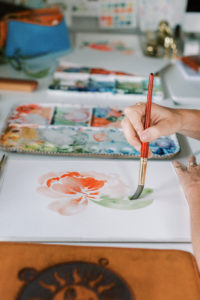
Hair Types
Synthetic vs. Natural Hair
There are pros and cons to using both synthetic and natural hair brushes. I personally prefer synthetic hair brushes for the price point and the fact that they don’t come from harming animals. Neither are great for the environment, so it’s important that when choosing a brush, you know how to take care of it so it lasts a lifetime!
Related: How to Clean Your Watercolor Brushes
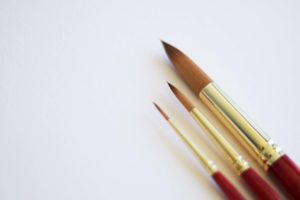
Sable
This is the most coveted and prized hair for watercolor brushes. Especially Kolinsky Sable. If you’re a natural hair brush person, this is what you want to look for. This type of hair is best for round shape brushes because of the snap. The Princeton Heritage 4050 series is a synthetic sable hair brush and is a fraction of the cost of natural sable hair brushes.
Squirrel
This one is similar to sable hair, but softer and they’re not as spring-y as the prized sable hair. I love a good synthetic squirrel hair brush for mop brushes or covering a large surface area! Obviously you can use the natural squirrel hair, I’m just not a natural hair brush person.
Hog
Really stiff and coarse hair. I’d really only use this hair in a flat brush because I like a lot of bounce or spring when I’m painting.
Goat
This hair is traditionally used in Japanese calligraphy and wash brushes. Brushes with this type of hair don’t usually form a crisp point.
Ox
Another hair I’d only use for flat brushes because of the stiffness. This type of hair is really great for dry brush texture though!
Brush Shapes
Round
My favorite and the most diverse and versatile shape. A 2-in-1 stroke brush! The tip of the brush comes to a fine point, and when you use the “belly” or width of the brush, you can get a nice, fat stroke. In my opinion, every watercolor artist should have at least 2 different size round brushes in their selection — a size 6 and size 16. My Princeton Heritage 4050 series rounds are my ride or dies.
Flat
These brushes are most commonly used in washes, stripes and more linear strokes and shapes. I love the Princeton Aqua Elite series flat brushes, specifically the Mottler!
Dagger
A flat brush, but make it slanted. The only difference between a flat brush and detail brush is the sharp edge or corner you can use for painting details.
Mop
Think really fat bellies. These brushes are typically made of squirrel (natural or synthetic) hair and are great for drinking up lots of water and still keeping a good point. I personally will always choose a round brush over a mop brush because mop brushes are more difficult to control.
Detail
The most common detail brushes are riggers and spotters. The main difference between the two is riggers have longer hair or bristles than spotters. If you’re going to splurge on any type of brush, you want to make sure to invest in a really good quality detail brush. Riggers will give you longer loads because the hair is longer. Think thin lines and larger details, while spotters are great for smaller details.
How to Choose the Right Brush
If you’re starting from scratch and don’t want to break the bank, my advice is always to go for 1 small brush (like a detail brush or a round size 2), 1 medium round brush (size 6 is my fave!), 1 large round (size 16) and a large wash/flat brush (Mottler from Aqua Elite). This will give you a well rounded collection and get you painting anything from flowers to landscapes, portraits to objects in both loose and realistic styles.

Then in terms of knowing which brush to use for particular moments in a painting or techniques, keep in mind the tips above and ask yourself these questions:
What’s the main goal for this stroke?
Smooth coverage?
Small details?
Dry texture?
Compound strokes without having to dip in water between?
My Top Picks
Princeton Heritage
Pros:
- Durability and spring. The springiest brush I’ve found and probably the main reason I love this series so much. I like to paint with bounce, what can I say? *Bend and snap!*
- Holds a lot of water. Similarly to the Aqua Elite series below, this series also holds lots of water, though not as much as Aqua Elite.
- Great price. Comparing to natural sable hair brushes, this synthetic series is comparable in performance, but a MUCH lower price point.
Cons:
- Fine points. The points on these brushes are great, but not needlepoint. So if you like to do lots of intricate detail work, these brushes won’t give you that extra sharp point.
Here's a more in-depth look at this series:
Princeton Aqua Elite
Pros:
- Durability. This series was made for spreading and dragging your brush across any texture of paper and made to last long.
- Holds a lot of water. The main feature for this brush series is its ability to hold water. This is a thirsty brush! So if you’re into painting landscapes or use a lot of wet in wet technique, this is a fabulous brush.
- Great price. Fantastic brush for the quality and technology!
- Huge range. You’ll find a huge range of size and shapes in this series from mottlers and daggers to round brushes of all sizes.
Cons:
- Very soft bristles. Because this series is known for its ability to hold tons of water, the hair is something to get used to. It’s much softer than the Heritage series brushes. This isn’t necessarily an issue, it’s just a learning curve.
Here's an in-depth look at these Aqua Elite brushes:
Winsor and Newton Cotman Short Handle
Pros:
- Snappy. The hair on these brushes is nice and stiff, but holds its shape well.
- Nice points. These brushes are great for detail work and offer a great point.
Cons:
- Short handle. This is more of a preference thing, but the short handles can be a problem if you like to work with big sweeping strokes and prefer a longer handle.
- Not a good hold. This series doesn’t have a good round brush that holds a lot of water. If you’re used to working with round brushes like I am, you’ll be disappointed in this range unless you can get used to dipping in water more frequently.
See all sizes of shapes of Cotman brushes here.
Da Vinci Maestro
Pros:
- Holds a lot of water. Similar to the Aqua Elite series, this brush is great at holding water!
- Extra sharp point. Like sharper than a knife. These points are long and clean and great for detailed work!
- Snappy. Very durable, stiff hair that snaps well back into shape.
Cons:
- No detail brush. This brand doesn’t offer a detail brush, however, their round brushes do offer the extra sharp point to compensate for that.
- Short handle. This is more of a preference thing, but the short handles can be a problem if you like to work with big sweeping strokes and prefer a longer handle.
- Price. These are natural and not synthetic hair so while they're high quality, their starting prices are significantly higher than the other synthetic brushes above.
For more tips on the do's and don'ts of watercolor brushes, watch this video:
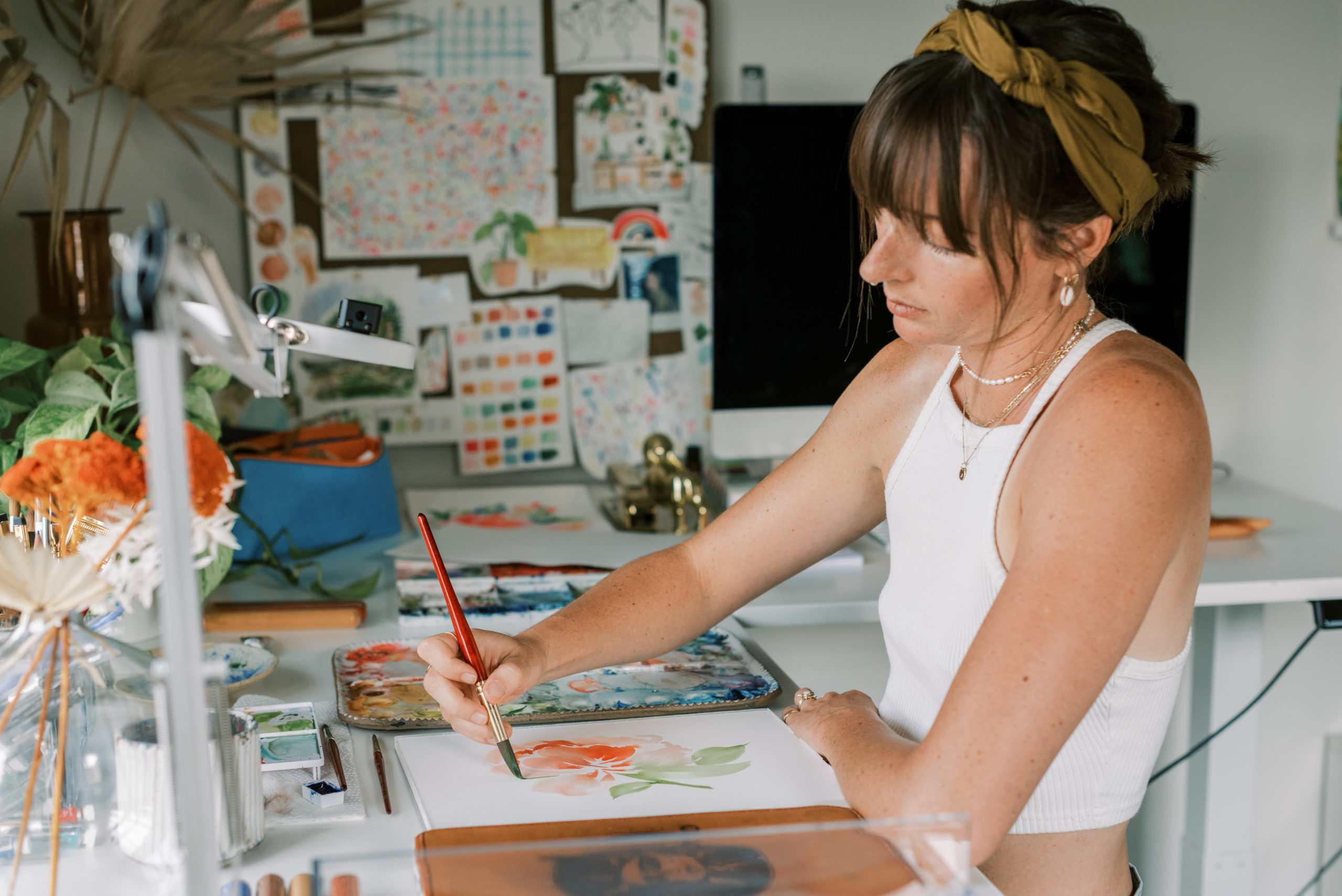
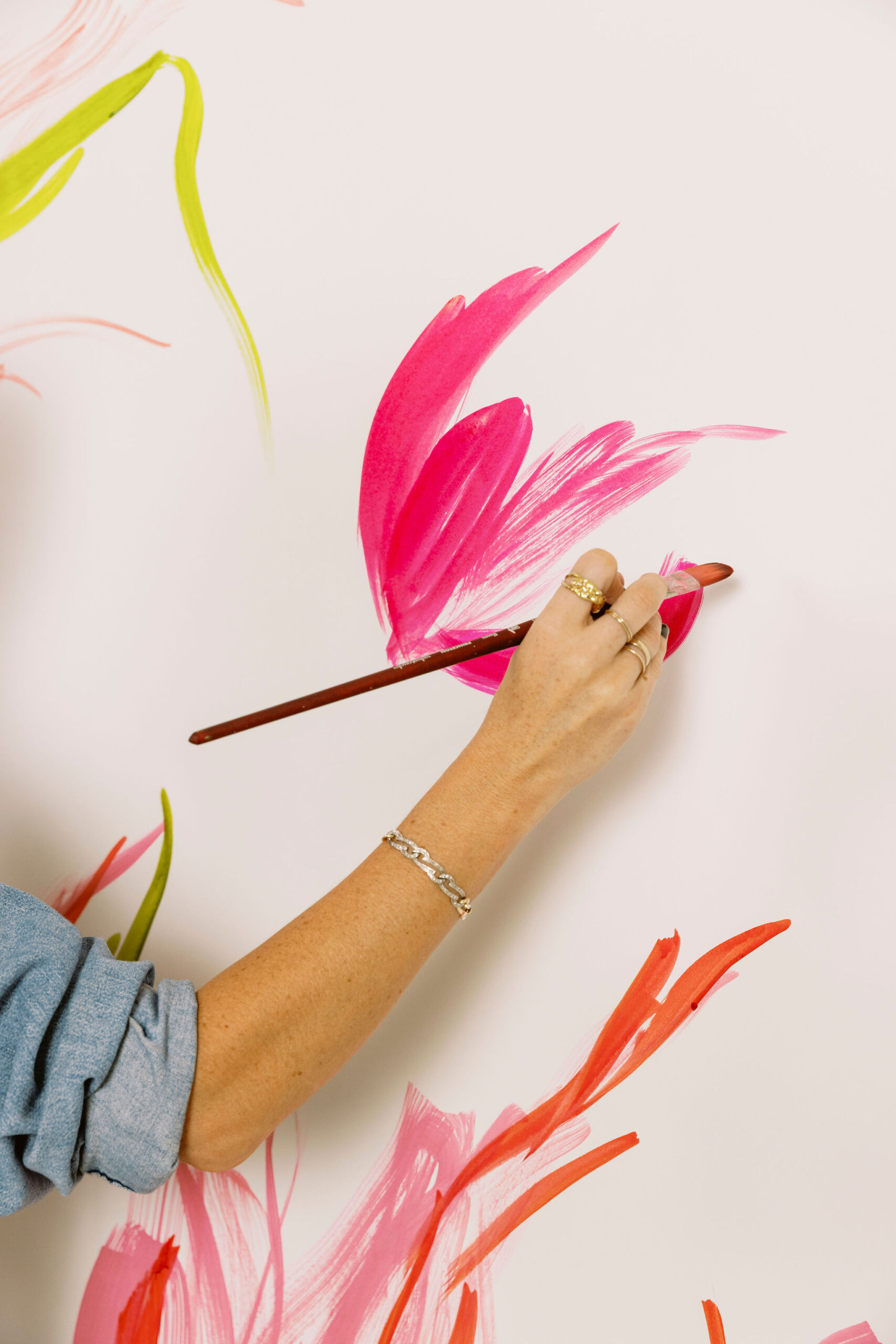
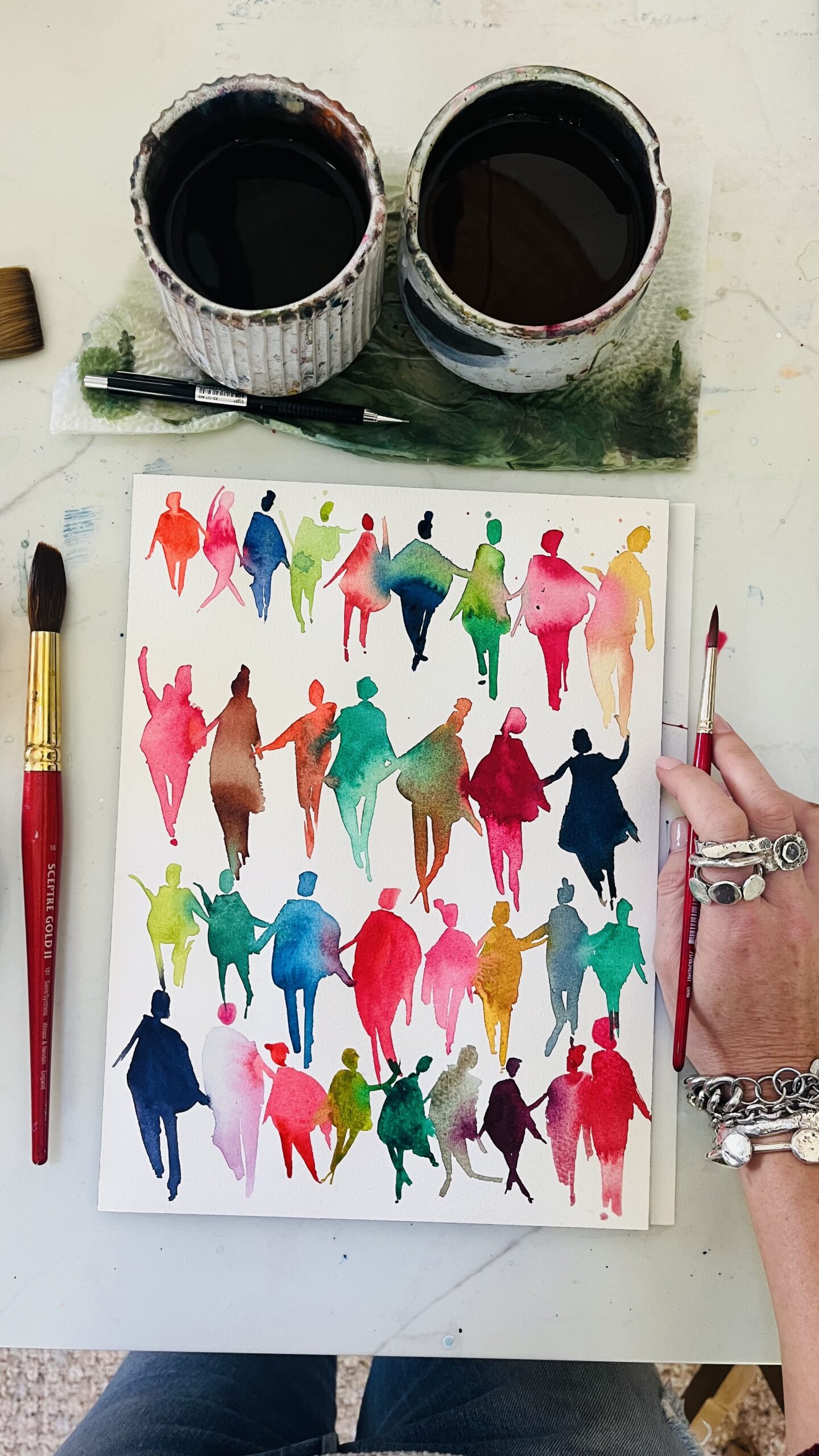
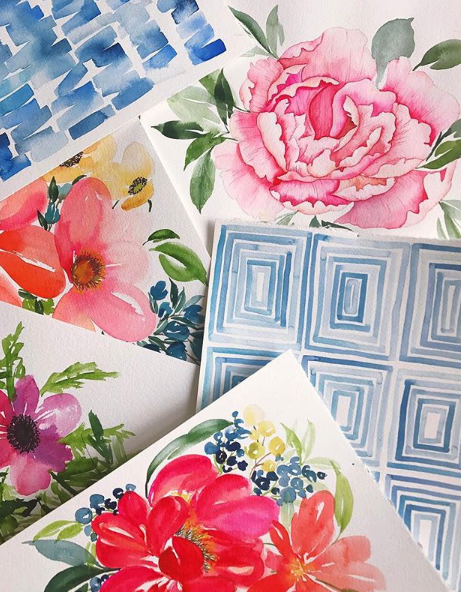
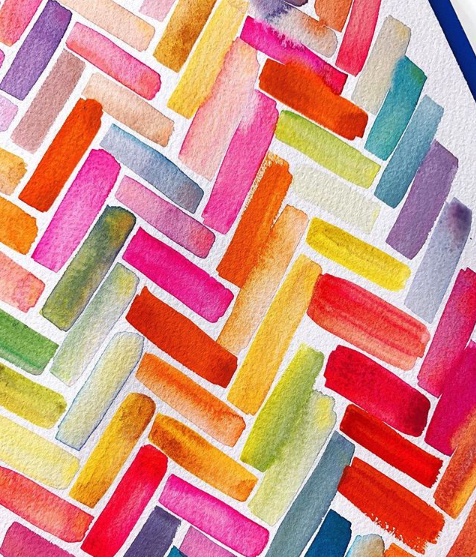
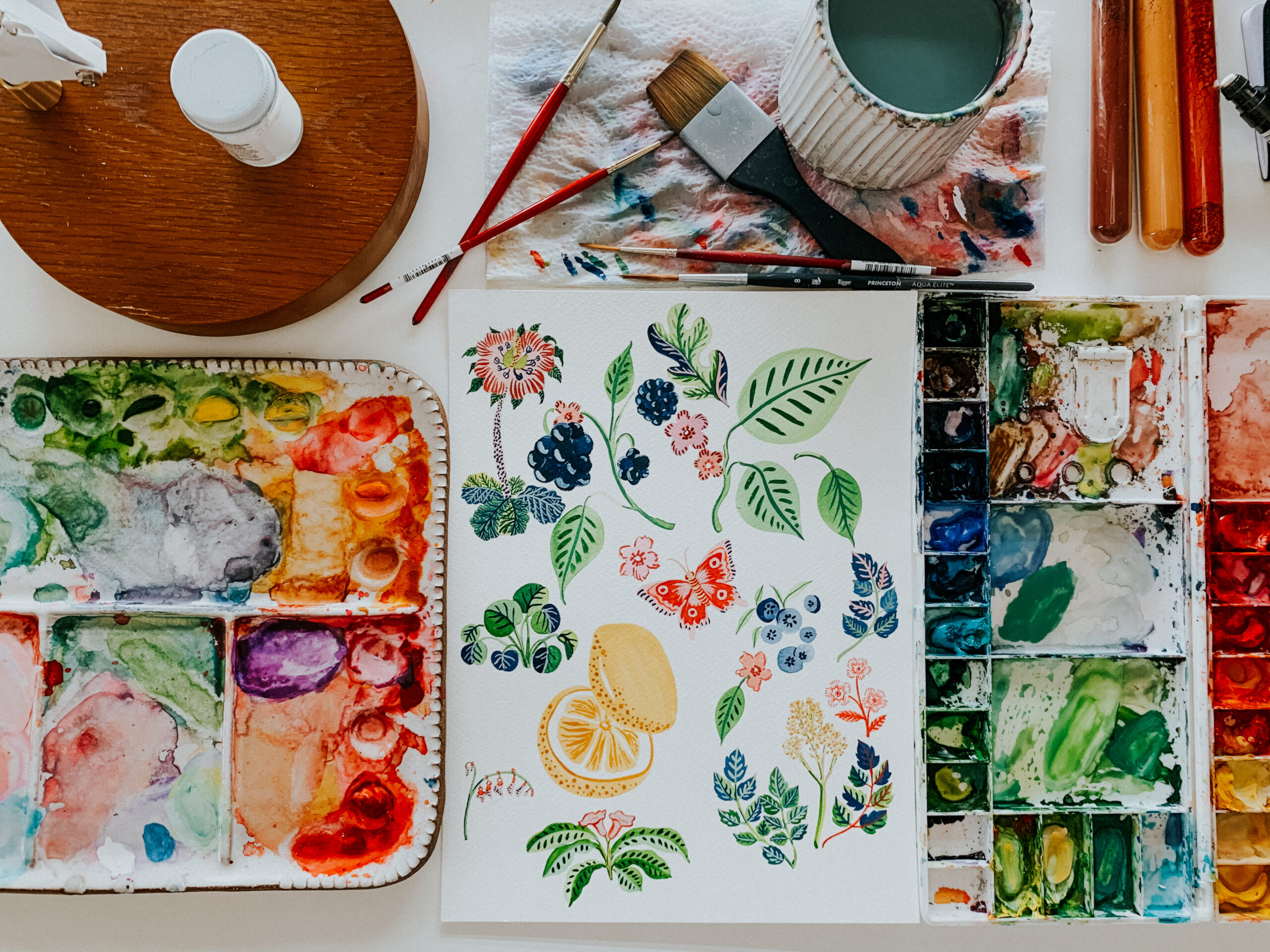
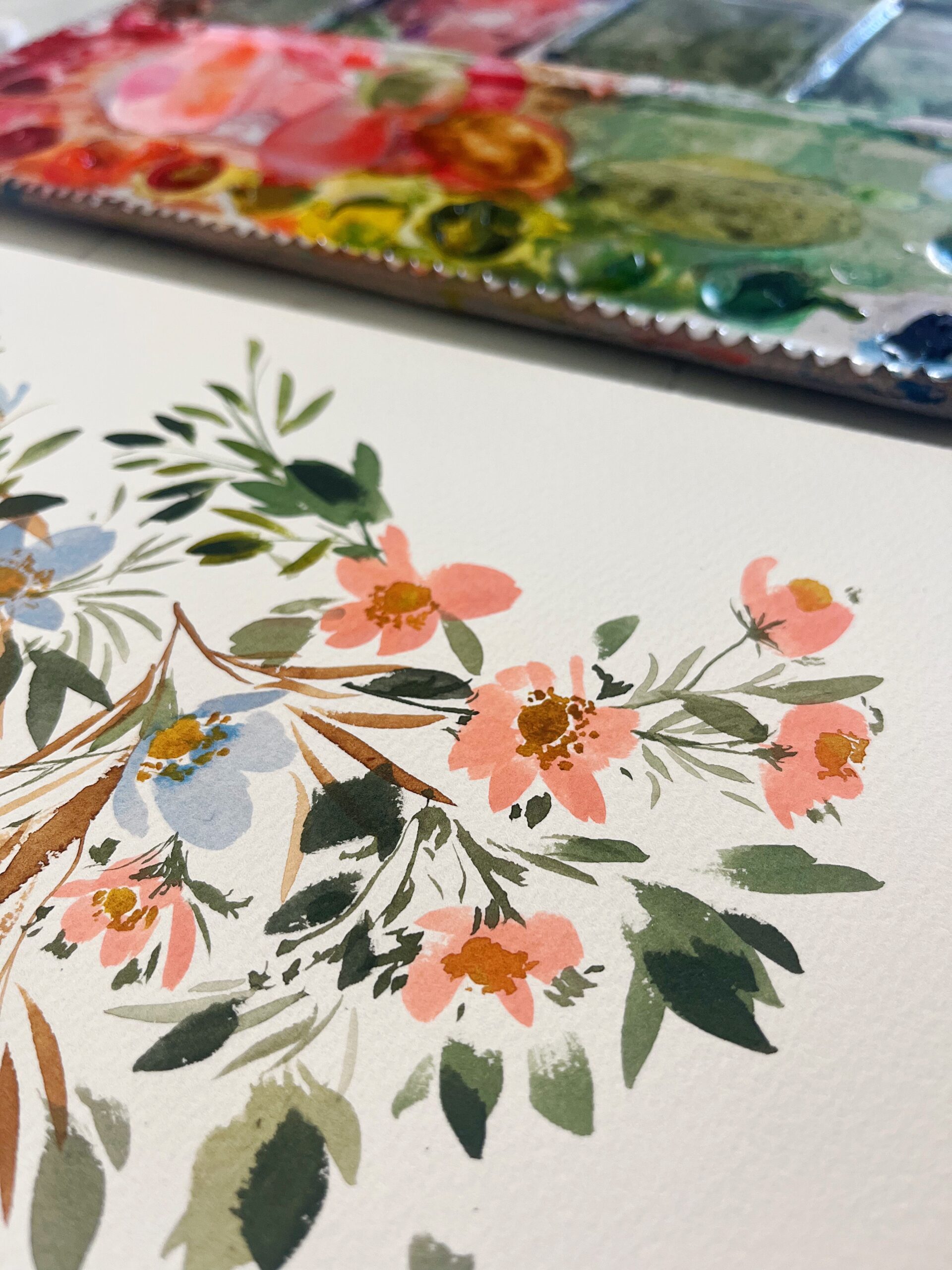


Where can we get Princeton Velvet touch #14 & #22 filbert synthetic sable brushes as mentioned in you post?
Hi Jenna. Thank you for this article. I am interested in trying my hand at painting. My father was a scenic artist in the TV industry. I inherited his brushes but they have been untouched for 40 years. They are mostly M Grumbacher. I honestly don’t even know how to tell if they are natural or synthetic. I would love to know how to clean and condition them, if necessary. I don’t want to do anything that would damage them. I am getting your Everyday Watercolor book to help me get started. Any advice you can offer regarding these brushes would be great. Thank you
Try reaching out to M. Grumbacher! They may have specific advice or insights into the types of brushes!
Thanks, Jenna. Will do!
Very helpful information. Being new to watercolor painting ( I’m more of a watercolor “attempter” than a “painter” at this point, though). I recognized some bad habits I developed just because I didn’t know any better. Mainly- keeping my brushes in water between uses, and not drying them on a flat surface.
Thank you for the heads up, and I’ll be looking for more of your helpful videos.
I’m just starting out and I’m sure you just saved me much grief and $. Thanks for these tips! I need my flat work area for other things while not painting, so my flat area for drying brushes (that my kids can’t get at) is limited. I’ve been hanging th vertically to dry. I loop a rubber band around the handle and a hanging rod in my closet, making sure the tip is straight down. I’ve been doing this with my makeup brushes for years. Is this a not-so-great practice?